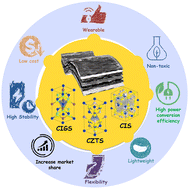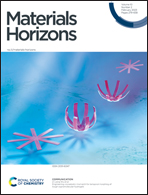Environment-friendly copper-based chalcogenide thin film solar cells: status and perspectives
Abstract
Copper chalcogenides (CuCh) have attracted considerable attention due to their promising potential as environmental-friendly photoactive material for lightweight and flexible thin film solar cells. Further, CuCh can be fabricated from simple to complex chemical compositions and offer a remarkable charge carrier mobility and excellent absorption coefficient with a desirable bandgap (up to ∼1.0 eV). Currently, they have demonstrated maximum power conversion efficiencies of over 23% for single-junction, around 25% and 28% for monolithic 2-Terminal (2T) and mechanically-stacked 4-Terminal (4T) perovskite/CuCh tandem solar cells, respectively. This article presents an overview of CuCh-based materials, from binary- to quaternary-CuCh compounds for single- and multi-junction solar cells. Then, we discuss the development of fabrication methods and the approaches taken to improve the performance of CuCh-based thin film itself, including chemical doping, the development of complement layers, and their potential application in flexible and lightweight devices. Finally, these technologies' stability, scalability, and toxicity aspects are discussed to enhance their current marketability.

- This article is part of the themed collection: Recent Review Articles


 Please wait while we load your content...
Please wait while we load your content...